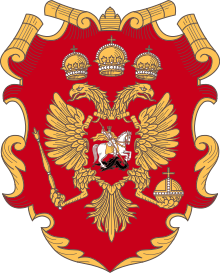Zemsky_sobor
Zemsky Sobor
Parliament of the Tsardom of Russia
The Zemsky Sobor (Russian: зе́мский собо́р, IPA: [ˈzʲemskʲɪj sɐˈbor], lit. 'assembly of the land') was a parliament of the Tsardom of Russia's estates of the realm active during the 16th and 17th centuries.
This article includes a list of general references, but it lacks sufficient corresponding inline citations. (January 2013) |
The assembly represented Russia's feudal classes in three categories: Nobility and the high bureaucracy, the Holy Sobor of the Orthodox clergy, and representatives of "commoners" including merchants and townspeople.[1] Assemblies could be summoned either by the tsar, the patriarch, or the boyar duma, to decide current agenda, controversial issues or enact major pieces of legislation.[2]
